Well here's some pics of the cabin insulation. So you understand what you're looking at, the ceiling is 2x10's with 2x2 nailers across which minimizes stud conduction. The walls in the addition are 2x6 with 2x2 nailers across. The foil facing reflects heat back and the taping which needs to be "tight", attention to detail here payoff.
Edit: no wires or pipes will penetrate this barrier.
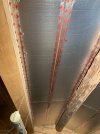
The ceiling between the purlin and ridge pole, note the gap at the ridge. This will be filled with foam then caulking will be applied to finish the seal.
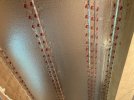
This pic shows from the purlin to the wall in the left of the pic. In the left lower corner some of the window foam sealant is evident.
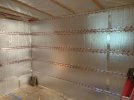
This picture shows the addition and the nailers and foil taping are obvious. The transition to floor is caulked as well.
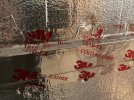
This shows the taping on a insulation board and the nailer. Note the fastener with a spot of tape on it. Missed a fastener, need to fix that.

Little repair of a rip from when I got careless.
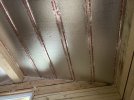
Looking up the stairs into the loft you see the tight ceiling and the edges caulking. Window corner shows sealant. The problem with a timber or log building is the amount of potential leaks between logs from movement over the years. The benefit is logs are a great heat sink.
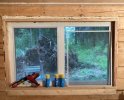
And finally the windows are foamed in between the timbers and rough in frame and window and wood frame.
The door is a salvage solid oak fire door in a jam I built and sealed like the windows. When the door is pushed closed you can feel the air pressure from closing. This place is just over 500 square feet but I'm betting it will heat for under 200 gallons a long sub Arctic winter.








 Windows are fiberglass casement. Our climate isn't severe.
Windows are fiberglass casement. Our climate isn't severe.